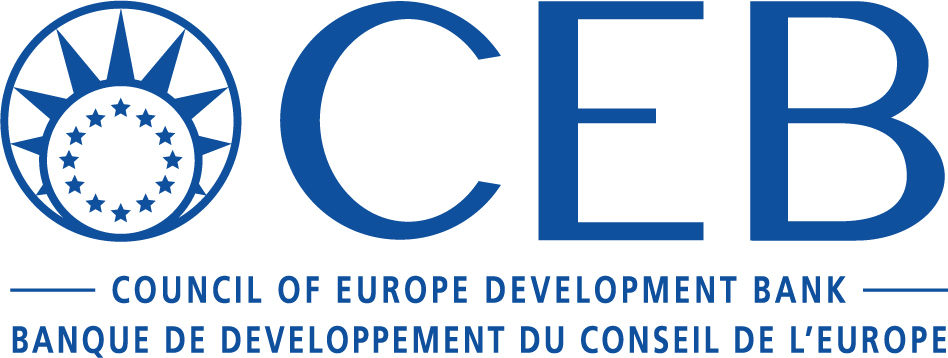Council of Europe Development Bank (CEB)
Mission
The Council of Europe Development Bank (CEB) is a multilateral development bank with an exclusively social mandate.
Through the provision of financing and technical expertise for projects with a high social impact in its Member States, it actively promotes social cohesion and strengthens social integration in Europe.
The CEB is a major instrument of solidarity in Europe. It finances social projects, responds to emergency situations, and improves the living conditions of the most disadvantaged population groups.
The following are the main sectors in which the CEB implements social investment projects across Europe.
- sustainable and inclusive growth
- integration of refugees, displaced persons and migrants;
- climate action: developing adaptation and mitigation measures.
The CEB carries out its work within the framework of a formal strategic plan, which guides CEB activity in the medium term. The Governing Board of the CEB has just approved the Bank’s Strategic Framework for the period 2023-2027.
History
The CEB is the oldest European multilateral development bank. It has its origins in the political upheavals that Europe experienced after the Second World War, leading to a flood of refugees and displaced persons into Western Europe.
Itwas established in 1956 by eight Member States of the Council of Europe on the basis of a partial agreement aimed at finding solutions to the problems of refugees.
Key dates in the history of the CEB
- 1956: the CEB was established in the form of a Resettlement Fund with a capital of less than 7 million US dollars.
- 1960s-1980s: over the decades, the CEB steadily increased its membership, financial resources, and scope of action in line with changes in social priorities. Born in the aftermath of a divided Europe, the CEB experienced a particular impetus with the reunification of the European continent after the fall of the Berlin Wall. More specifically, three Council of Europe Summits of Heads of State and Government helped to shape the Bank.
- 1993: the Vienna Summit signalled a wave of new CEB members from Central, Eastern, and South-Eastern Europe..
- 1997: the Strasbourg Summit widened the CEB’s mandate to include strengthening social cohesion, alongside the priorities set out in its Articles of Agreement.
- 2005: the Warsaw Summit, whilst continuing to support the Bank’s traditional mission, also invited the CEB to contribute in its own way to the development of free, democratic, and more inclusive European societies.
- Since 2008, consecutive crises in Europe and their impact on the lives of people have made the CEB’s mandate and action as a social development bank more relevant than ever.
Relations with the Council of Europe
Working to strengthen social cohesion in accordance with its mandate, through its lending activity the Bank promotes the values and principles of the Council of Europe. It is nevertheless a separate legal entity and financially independent.
As evidence of these institutional links, the Secretary General of the Council of Europe issues an opinion on admissibility in terms of compliance with the Council of Europe’s political and social objectives for all the projects that the Bank submits to its Administrative Council for approval.
Member countries
The CEB has 42 Member States who are the Bank’s shareholders. All members of the Council of Europe are eligible to join the CEB.
* Target countries
Albania*
Andorra
Belgium
Bosnia and Herzegovina*
Bulgaria*
Croatia*
Cyprus*
Czech Republic*
Denmark
Estonia*
France
Georgia*
Germany
Greece
Holy See
Finland
Hungary*
Iceland
Ireland
Italy
Kosovo*
Latvia*
Liechtenstein
Lithuania*
Luxembourg
Malta*
Republic of Moldova*
Montenegro*
Netherlands
North Macedonia*
Norway
Poland*
Portugal
Romania*
San Marino
Serbia*
Slovak Republic*
Slovenia*
Spain
Sweden
Switzerland
Türkiye*
The CEB can provide loans to any of its Member States in accordance with its mandate. The Bank may also receive voluntary contributions from its members, through fiduciary accounts.
A CEB member can be both a donor and a recipient of loans.
*As a sign of solidarity among the CEB member states, the Bank aims to provide increased support to a group of 22 “target countries” of Central, Eastern and South-Eastern Europe: Albania, Bosnia and Herzegovina, Bulgaria, Croatia, Cyprus, Czech Republic, Estonia, Georgia, Hungary, Kosovo, Latvia, Lithuania, Malta, Moldova (Republic of), Montenegro, North Macedonia, Poland, Romania, Serbia, Slovak Republic, Slovenia and Türkiye.
